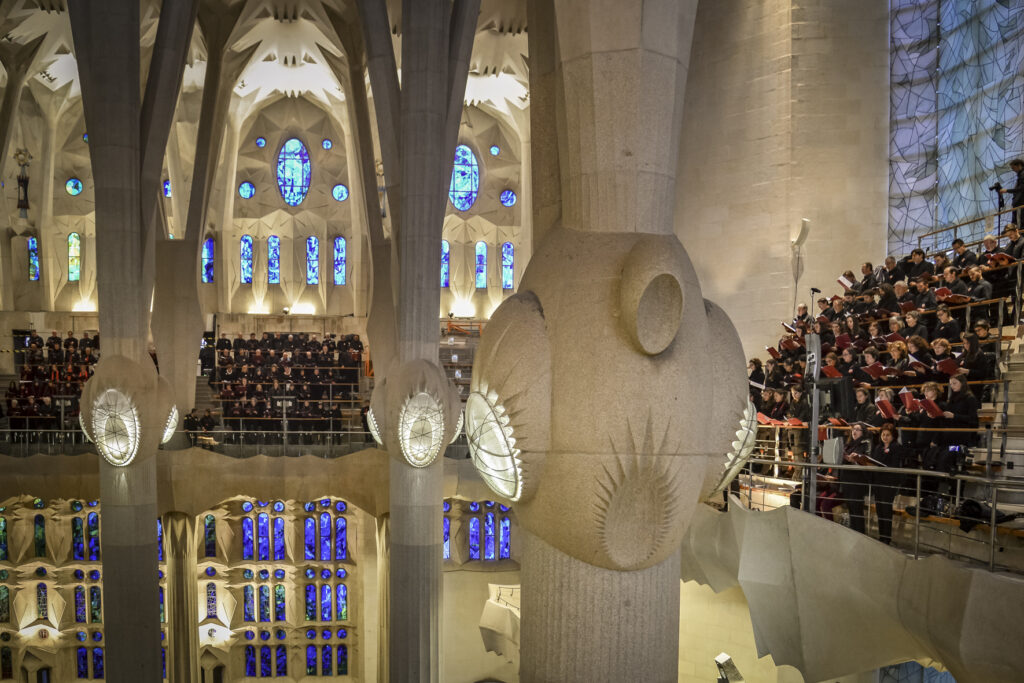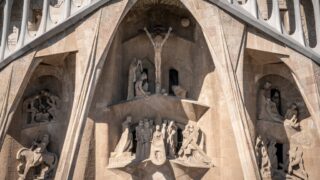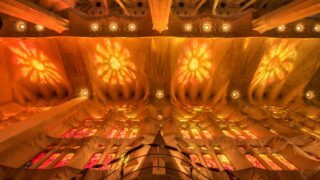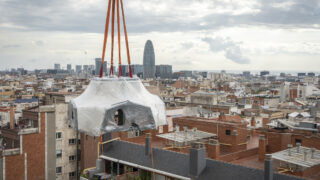Singing was always a big part of Antoni Gaudí’s project for the Sagrada Família. In this post, with Junta Constructora architects Umberto Viotto and Narcís Laguarda, we will discover how Gaudí imagined the choirs (the spaces for the choirs) and their acoustics, how he wanted the singers placed, his taste in music and his relationship with Lluís Millet and Orfeó Català.
Singing that fills the Temple
Gaudí wanted the singers voices to envelop the inside of the Temple to highlight the presence of God. This is why he put the choirs around the space, near the parishioners, 15 to 20 metres off the ground. Putting them at this height takes better advantage of the space and allows the singers to see the altar and the conductor leading them from anywhere in the nave. Plus, as Umberto Viotto notes, the hyperboloid vaults act as a sounding board, with the ceiling reflecting the singers voices and projecting the sound towards the parishioners, like light, so the liturgy can reach everyone. Before the Sagrada Família, Gaudí tested this acoustical effect with the pulpit he designed while restoring the Cathedral of Mallorca, which included a stone sounding board at the top to amplify the speaker’s message.

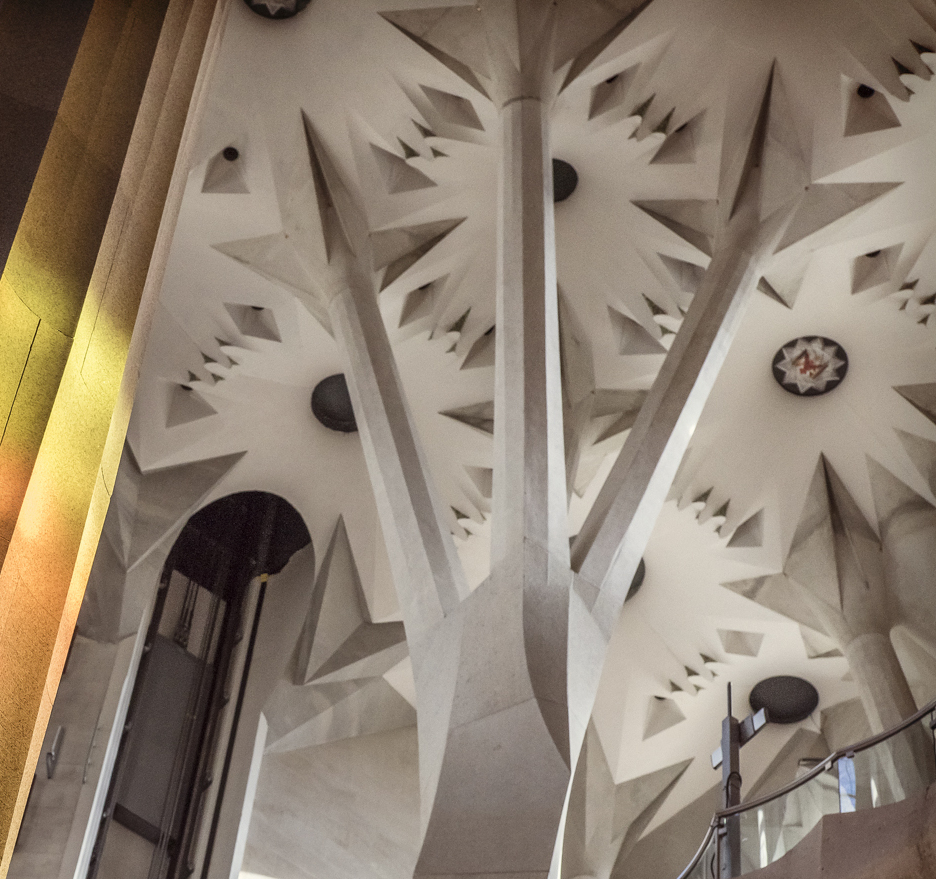
Replica of the sounding board Antoni Gaudí designed for the Cathedral of Mallorca (left). Vaults above the choirs that reflect the sound and project it towards the nave (right)
«The word, which is the time and vehicle of prayer, must be part of the Temple, where the spaces for the women’s, men’s and children’s choirs will be of great importance. The word will dominate the music»
. Gaudí i la Sagrada Família explicada per ell mateix (page 77)
In terms of acoustics, the cloister is also very important. Traditionally, this space was placed to one side of the church or monastery, but Gaudí wanted it to surround the Basilica because he saw it as a place to help keep out the city noise and to pray before going further inside.
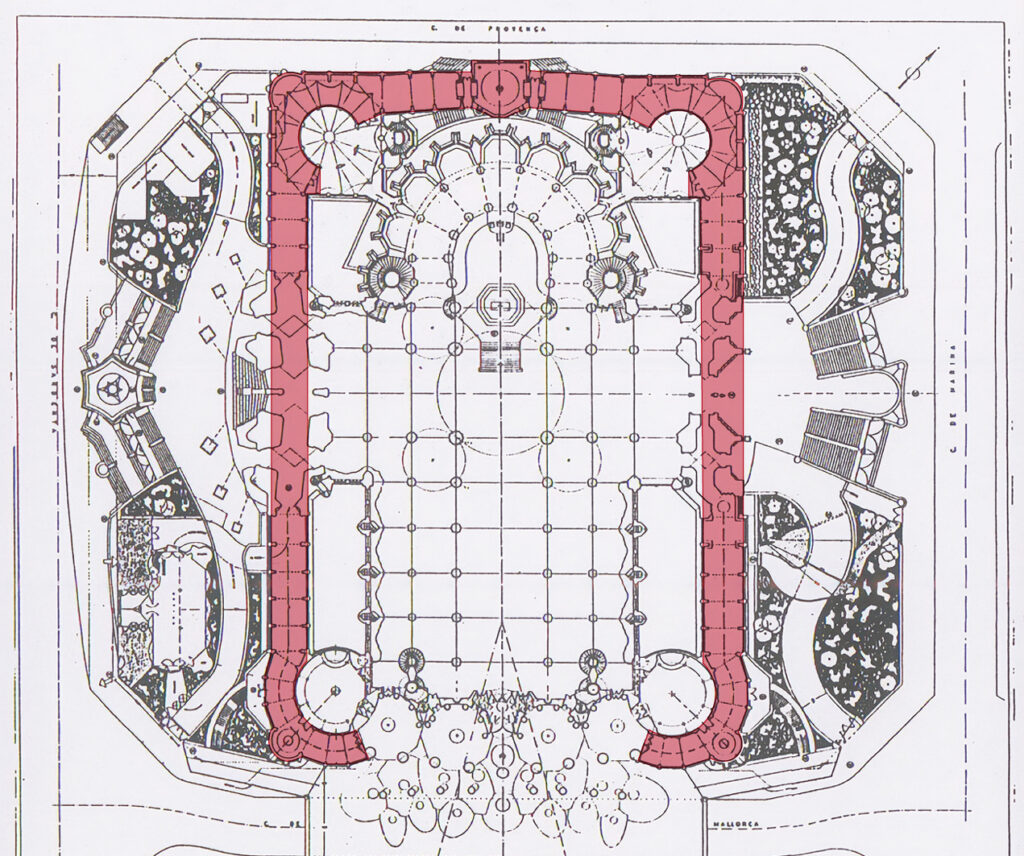
Perimeter of the cloister of the Sagrada Família
Regarding placement, as explained in the Àlbums de Temple, Gaudí put the women’s choir along the façades of the side naves and the Glory façade, in a horseshoe shape. Above that, 30 metres up, he designed another space for singers and, above the ambulatory that surrounds the presbytery, in the apse, one for the children’s choir. To round out the choirs, he also described a space in the central lantern, 45 metres up, for the Temple’s musical chapel, among four organs. Finally, over the main door, Gaudí planned a podium or balcony, known as the Jube, for the singing of blessings.
In all, he set aside space for over a thousand voices, which would merge with the faithful singing below during services. “The people have to take part in the Church’s songs", Gaudí told Joan Bergós, the architect’s assistant and friend, who shared it in his book Gaudí. The man and his work.
Also based on conversations with Gaudí, collaborating architect and disciple Isidre Puig Boada wrote that the interior should feature the final hymn of the prayers traditionally sung throughout the day (Matins, Lauds, Vespers and Compline), arranged around the Temple along the sun’s path over the course of the day. In addition to this Liturgy of the Hours Gaudí had already mentioned, there is also the liturgical year, with Advent, Christmas and Lent along the Nativity side and Easter and Pentecost on the Passion side, explains Narcís Laguarda.
The notes for these Gregorian chants appear on the railings of the choirs on tetragram. Plus, each of the 12 sections of choir risers is labelled with the name of the chant, making them easier to identify. Right now, however, only one is in place as an example: “Veni creator Spiritus”.
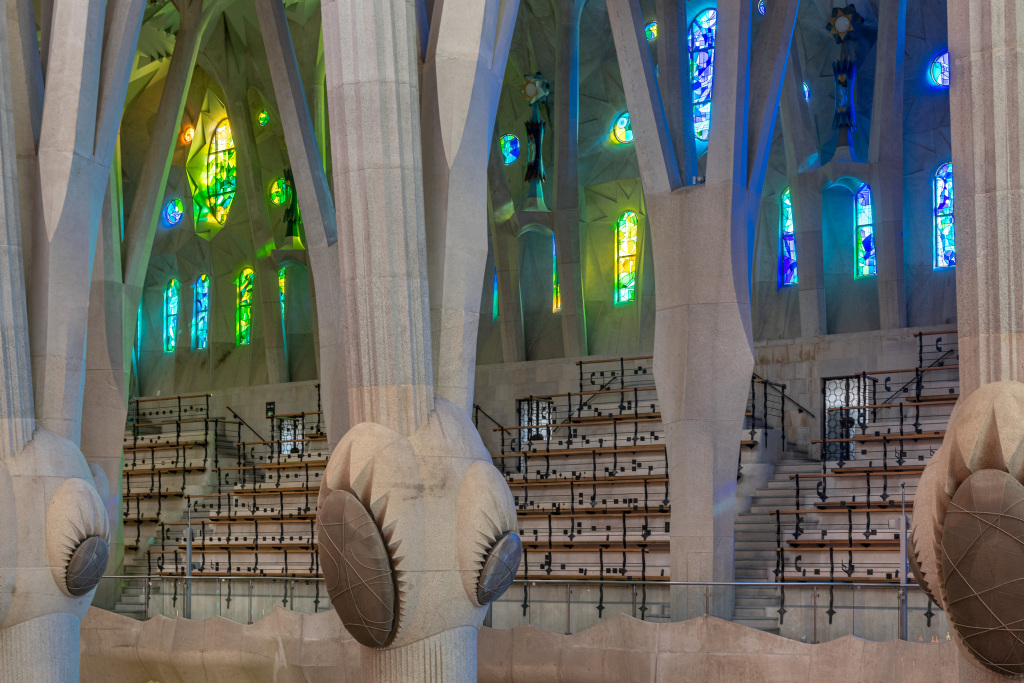
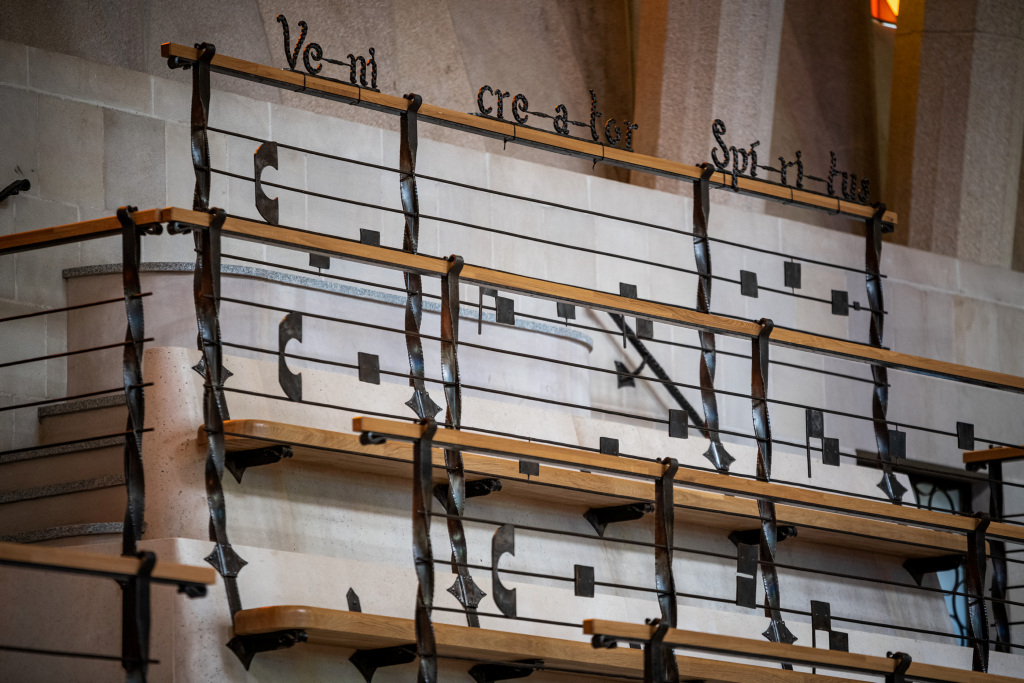
Choirs on the side nave, along the Nativity façade (left). The railings on the choirs featuring the tetragram notation of the liturgical hymns and above them the title “Veni creator Spiritus” (right)
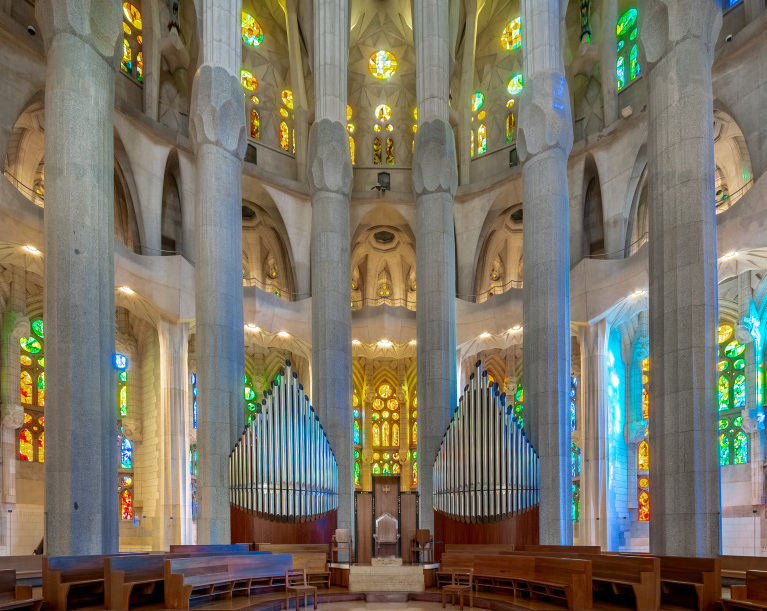
Choirs above the ambulatory for the children’s choir
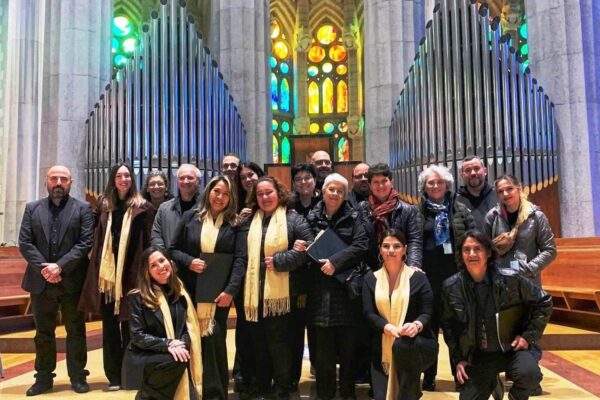
Musical chapel: group of musicians serving an institution, such as a cathedral or court. It also refers to the way the music is performed, only singers without accompaniment, known as a cappella (“chapel” in Italian), and originally related to the practice of singing without instruments in churches.
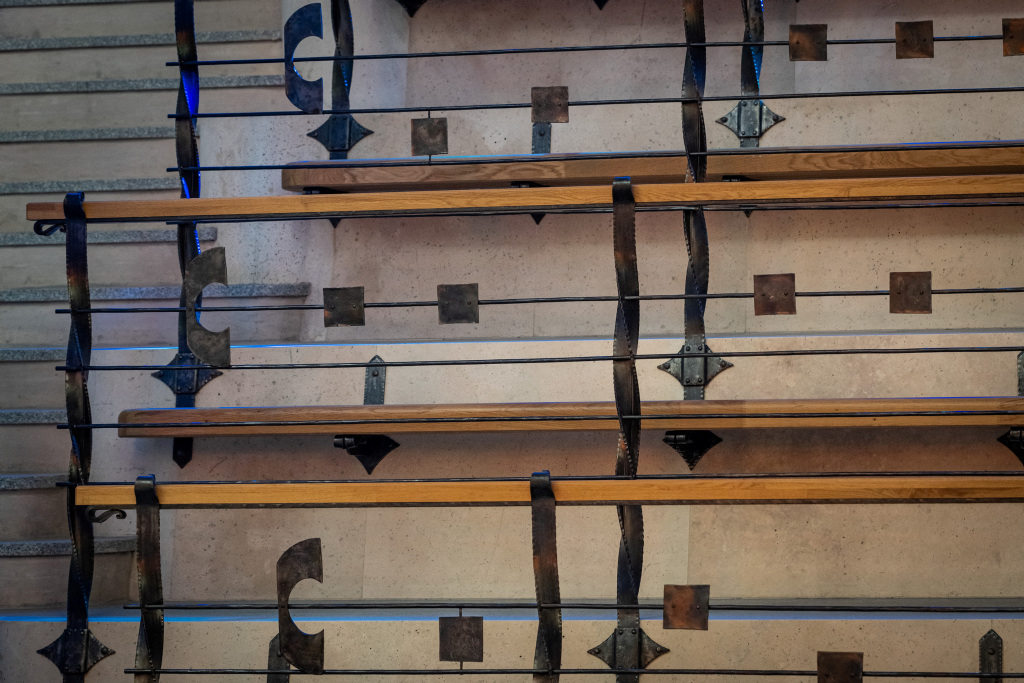
Tetragram: four parallel horizontal lines historically used to notate Gregorian chants.
Gaudí’s musical references: a return to the origins
As we’ve seen, one of Gaudí’s goals for the Sagrada Família was to bring religious music to the faithful, in line with the trend Pope Pius X (1835-1914) promulgated in his Motu Proprio Tra le sollecitudini. To do so, the architect wanted to return to the origins, Gregorian chants, the traditional music of the Catholic Church from medieval times, and popular Catalan music. He shared these two musical influences with his friend Lluís Millet i Pagès, founder and director of Orfeó Català. Their relationship probably began as a result of the architect’s visits to Sant Felip Neri church, where Millet was the chapel master. The two friends also met at the Sagrada Família, as these photos show:
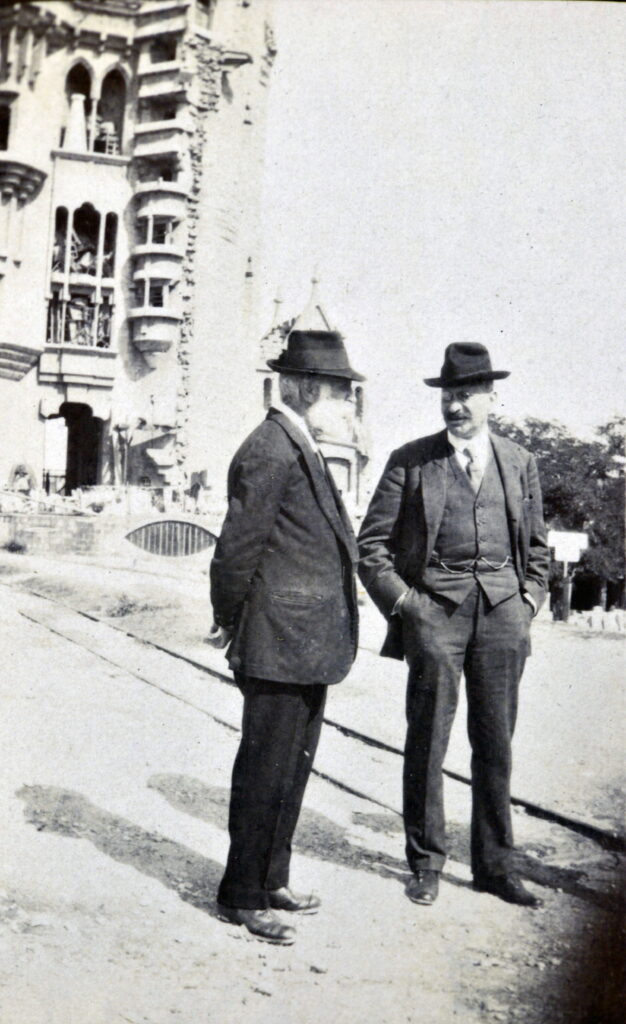
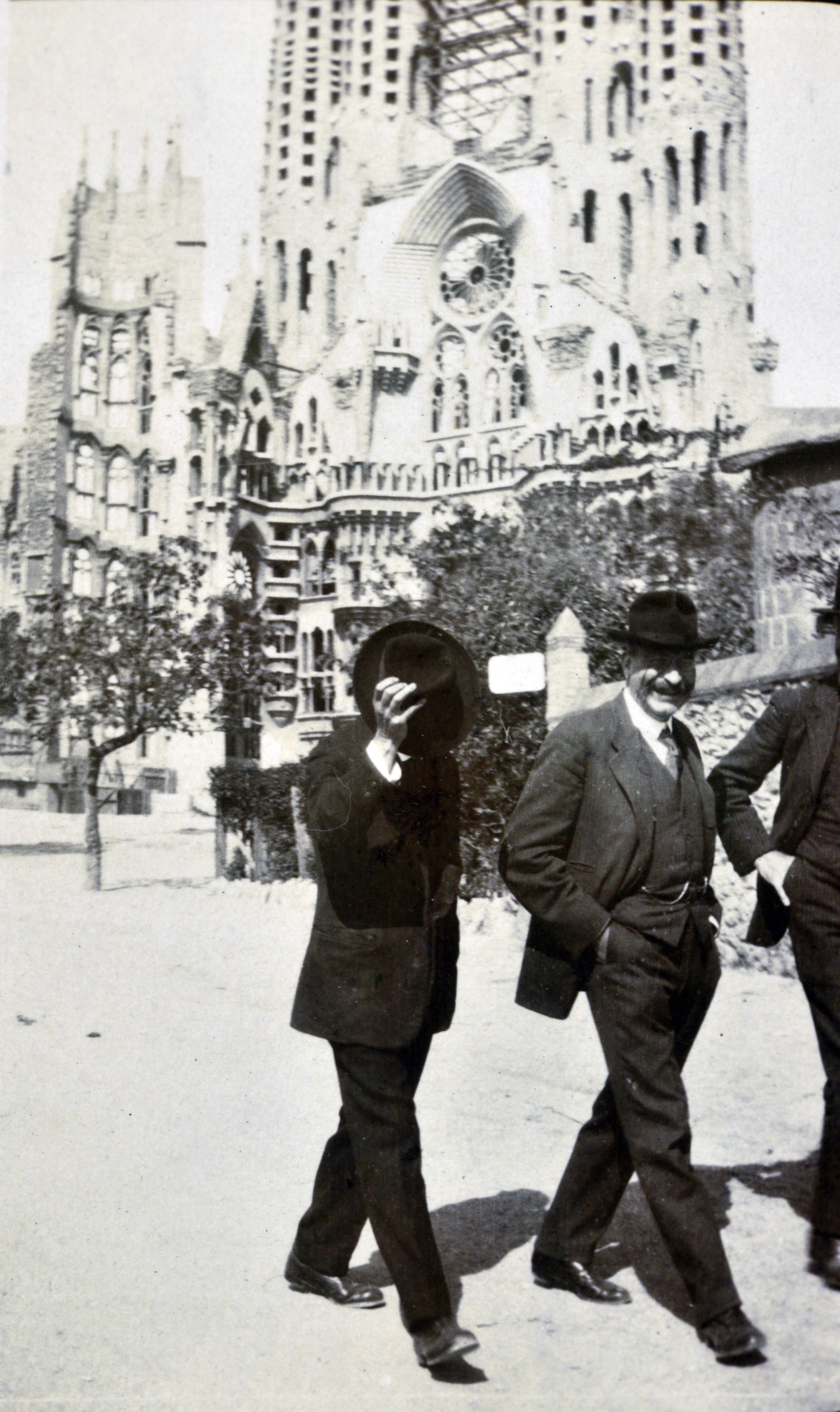
The musical affinity of Gaudí and Millet became clear in 1916, when they attended the first course on Gregorian chants at the Palau de la Música Catalana. “This was when the architect learned about the traditional Church songs and the Liturgy of the Hours, knowledge that he later wanted to share through the Sagrada Família", Laguarda explains. In fact, there is a class photo from the course, taught by Gregori Maria Sunyol, a monk from Montserrat.
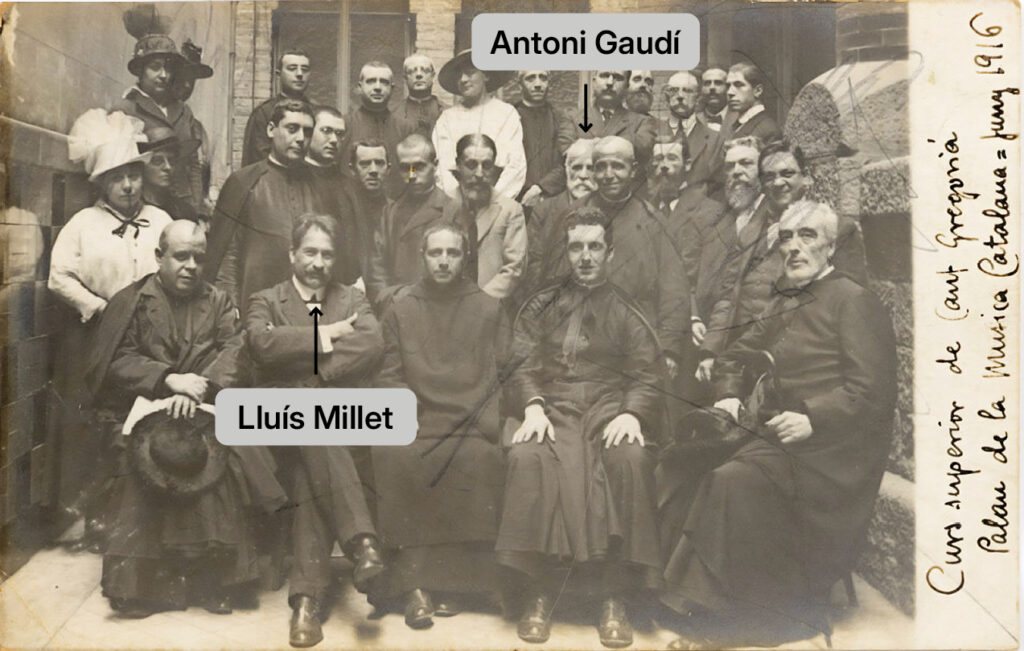
Students in the course on Gregorian chants at the Palau de la Música Catalana in 1916, including Lluís Millet and Antoni Gaudí. Source: Orfeó Català documentation centre
Antoni Gaudí also felt a connection to Orfeó Català de Barcelona, a choir group founded in 1891 by his friend to share the universal and Catalan choral repertoire. On 29 June 1922, during a visit to the Palau de la Música Catalana on the feast of Saint Peter, he showed his appreciation for this group when they asked him to sign their book of honour. The architect, who loved to draw, improvised an allegory of Orpheus (hero of ancient Greece) playing the lyre, surrounded by animals. Below the drawing, which is still in the group’s archives, he wrote the following dedication: “In Heaven, we will all be orpheonists.”

Antoni Gaudí’s dedication to Orfeó Català in the book of honour. Source: Orfeó Català documentation centre
Gaudí also forged a friendship with Joan Baptista Serra de Martínez, architect and collaborator on works such as Casa Vicens. In his book Gaudí i la música, Serra de Martínez, who was the chapel master at Sant Just i Pastor, explains that the architect of the Sagrada Família visited the parish on occasion to hear the popular singers rehearse. The same book also shares a funny anecdote about Gaudí and Lluís Millet. One day they were walking around the Basilica when the Orfeó director asked his friend what he thought of the performance of a Bach’s Passion at the Palau de la Música Catalana. The architect, who wasn’t a big fan of German composers, expressed his admiration for the work and added: “But I think I liked it so much because you, my friend Millet, changed the arrangement a bit.” (Gaudí i la música. Joan Baptista Serra de Martínez, page 33)
Gaudí and Millet remained friends until the architect died on 10 June 1926, three days after being hit by a tram. The composer was one of many to accompany his coffin in the funeral procession through the streets of Barcelona from Hospital de la Santa Creu to the Sagrada Família, walking by his side as he had done so many times before. Once at the Basilica, Millet paid tribute to his friend by conducting Orfeó Català in Requiem by Tomás Luis de Victòria, one of the most well-known composers of the Spanish Renaissance.
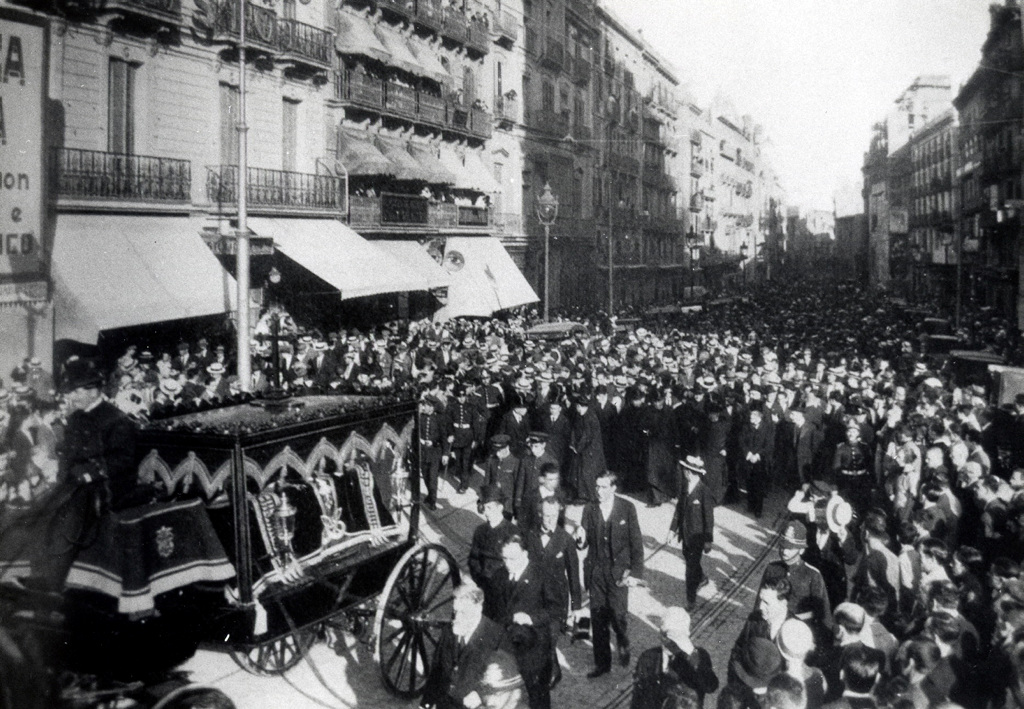
This year on 21 November the Basilica hosted an international concert with three prestigious children’s choirs: Escolania de Montserrat, Copenhagen Boys Choir and Tölzer Knabenchor of Bavaria. It was a great opportunity to again fill the Basilica with voices, as Gaudí intended. For this event, however, the choirs weren't in the choir areas, which are reserved for very special occasions.

